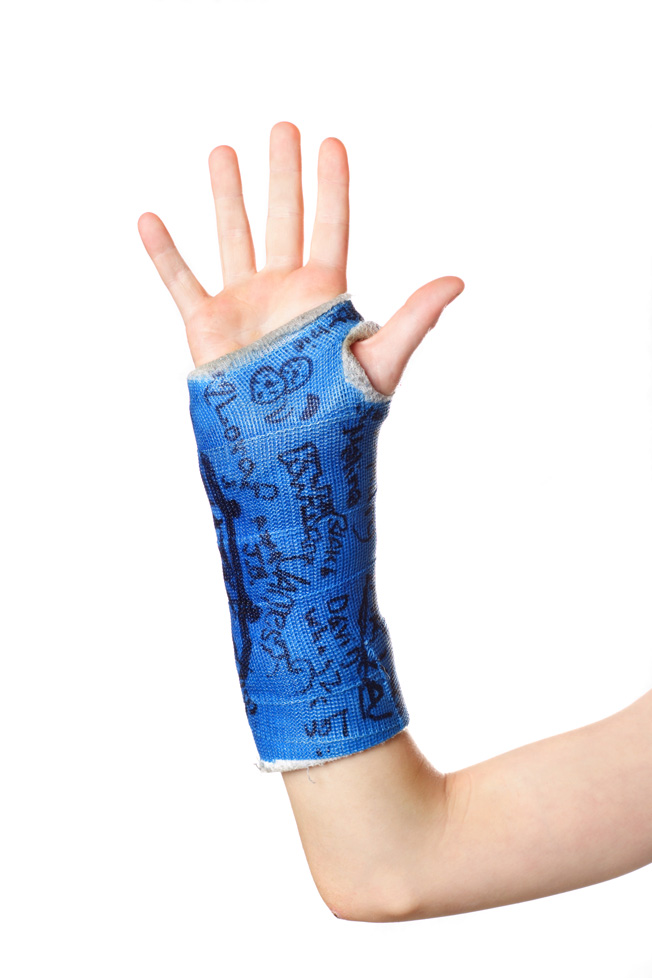Pediatric Hand and Wrist Fractures
Kids are active, but not always graceful! Falls happen to children of all ages, and when they land on their outstretched hand or wrist, injuries can occur. Unfortunately, fractures are a right-of-passage for most children. Fractures are simply breaks or cracks in the bone. If they’ve already had an x-ray, and you’ve been told the bone was “broken." “hairline," “green stick," “buckled," “cracked," “chipped," "split," “shattered," or “splintered," these are all just different ways of describing a fracture. Because children’s bones are more flexible than adults’, sometimes they “bend” or “buckle” like a “green stick” rather than cracking. Often the fractures occur around the soft growth plates at the wrist and bases of the fingers.

Causes
Most hand and wrist fractures in children are caused by injuries:
- Fall onto an outstretched hand (most common)
- Direct blows to the hand or wrist (sports, vehicle accidents)
- Finger hyperextension / jamming injuries
Signs and symptoms
Pain, swelling, stiffness
- Bruising
- Clicking or popping
- Deformity
Is there a test for hand and wrist fractures?
Yes! Some fractures are obvious if there is a deformity, but typically X-ray is used to definitively diagnose the fracture and plan treatment.

Treatment
Suspected hand and wrist fractures warrant emergent treatment if your child is experiencing hand numbness and tingling, severe or “tight” swelling, significant deformity, or any open wounds around the hand or wrist (possible open or compound fracture). Even without these warning signs, it is best to seek urgent treatment so that the fracture can be set straight and properly splinted or casted. Delayed treatment of pediatric fractures can lead to undesirable outcomes, including malunion (bone doesn’t heal straight), and nonunion (bone doesn’t heal at all).
Nonoperative treatment:
Splinting and casting are the mainstays of nonoperative treatment for fractures that are stable and not badly displaced (out of alignment). Sometimes the fracture will need to be “set” straight before splinting. Cast treatment usually lasts 4-6 weeks, depending on the type of fracture.
Operative treatment:
Surgical repair of pediatric hand and wrist fractures is rarely required except in situations where the bone cannot be set straight or if it's not healing properly with cast treatment.
Ready to confirm a diagnosis and fix the problem, or just want to learn more?
Our board-certified orthopedic hand and wrist surgeons, Eric Angermeier, MD and Kyle Kokko, MD, PhD, are here to help! They can often diagnose the problem in one visit, and get you started with a treatment plan. We offer a wide variety of both nonoperative and operative treatment options.
Call today for a clinic or telehealth appointment! 854-429-4263